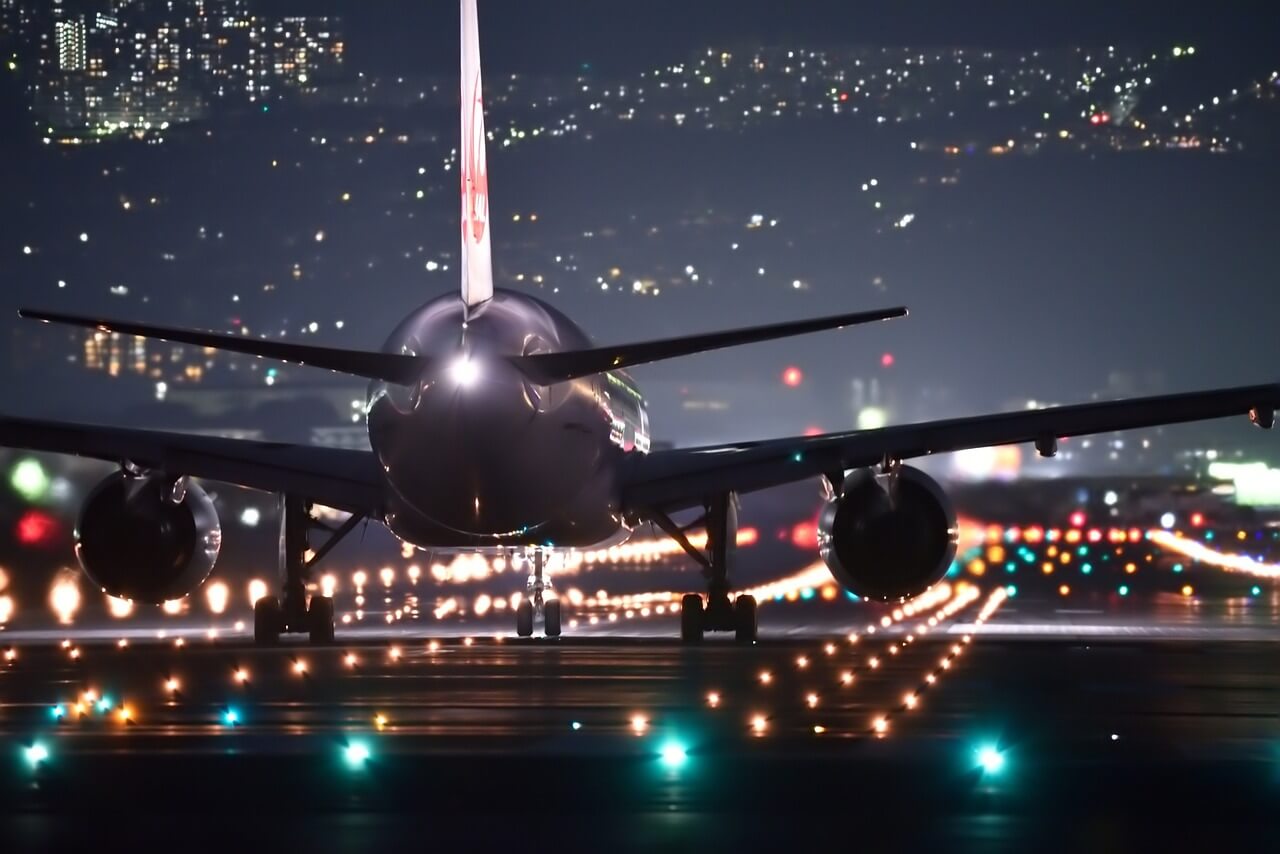If you’re ever out and about late at night and see a plane flying by, it’s worth taking note of all the different kinds of lights it has. There are stringent rules regarding the use of various lights to ensure the safety of passengers and staff. Every member of the aviation system—from pilots to ground crew to air traffic controllers—needs a thorough understanding of the rules and purposes of lights on planes to ensure the system runs smoothly and safely.
Five Aircraft Lights and Their Purposes

Lights on planes are very important for flight safety. They aid in the pilot’s ability to see and avoid obstacles and the ground crew and others’ ability to identify and communicate with the aircraft. The five regulations and functions of aircraft lights are as follows:
Deflection Lights
Anti-collision lights are lights installed on aircraft with the express purpose of preventing collisions. These lights will be located on both the top and bottom of the plane, shining a bright, flashing light that can be seen for miles in any direction. These lights let other planes and people on the ground know where and how your plane is headed.
Lights for Use in Navigation
When it comes to aircraft lighting, navigation lights are also crucial. These lights are typically red and are mounted on the plane’s wingtips. These lights will indicate the direction of travel to other pilots. The green light indicates a forward flight path toward another pilot, while the red light indicates a reverse flight path away from another pilot.
Downlights For Landing
Airplanes have specialized landing lights to help the pilot see the runway more clearly. These lights, located on the front of the plane, are used to illuminate the runway and are aimed straight ahead. The runway is visible thanks to these lights, allowing the pilot to land safely.
Flashing Cabin Lights
The airport taxiway lights are another type of aircraft light. Located at the front of the plane, these lights shine a wide, diffuse ray of light down to the ground below. These lights are installed so the pilot can see the taxiway and avoid colliding with other vehicles or people working on the ground.
Signal Flares
Certain planes are equipped with special lights called beacons to identify planes on the ground. You can see these lights from great distances because they shine brightly and steadily from the plane’s top and bottom. The ground crew will appreciate these lights because they indicate the plane’s location and readiness for takeoff.
An Overview of Aircraft Lighting for Nighttime Firefighting
Plane lights are integral to ensuring the security and success of aerial firefighting operations. Topics below discuss the various applications of aircraft lighting during nighttime aerial firefighting operations.
Fire Scene Lighting
In aerial firefighting at night, one of the most important functions of a plane’s lights is to shed light on the blaze. This improves the pilots’ ability to see the fire, determine its size and location, and spot potential threats. Since they can see what they’re doing better and, in less danger, ground crew members also benefit from the lights on the plane.
Getting Around and Not Hitting Anything
Aerial firefighting at night requires LEDs on aircraft for navigation and collision avoidance. The lights aid the pilots in spotting and avoiding obstacles like power lines, trees, and other planes. There is less chance of a collision between firefighting and other planes because of the navigation lights installed on board.
Discussions with the Ground Crew
When fighting fires from the air at night, it is crucial to communicate with the ground crew. Pilots can coordinate water drops with the ground crew, signal for help, and indicate flight direction using the lights’ patterns and colors.
Help for the Ground Team
Aircraft LEDs have multiple uses in firefighting, including their primary role in the air and assisting ground crews at night. Bright light from the aircraft can aid the ground crew in seeing and navigating the fire scene, creating a more secure and productive work environment and a more effective firefight.
Tendencies of Urgency
Aerial firefighting operations at night can also benefit from plane lights in an emergency. With the landing lights on, a pilot can see the ground more clearly in the event of an emergency landing, increasing the likelihood of a successful landing. In an emergency, ground crews can pinpoint the plane’s location thanks to beacon lights installed on board.
Advantages of Modern Aircraft Lighting Systems for Reducing Fuel Use and Carbon Footprint
To a large extent, air travel is responsible for the negative environmental effects of aviation and the emission of greenhouse gases. Airline companies are taking steps to lessen their negative effects on the environment by installing new, more eco-friendly aircraft lighting systems. Learn how modern aircraft lighting systems are helping airlines cut costs and carbon footprints.
LED Lights
LED lighting is widely used in today’s aircraft lighting systems because it is more efficient and lasts longer than conventional incandescent bulbs. LEDs can reduce airline operating costs by as much as 85 percent compared to traditional lighting. In addition, LEDs are cooler to the touch, easing the load on the plane’s air conditioning system.
Advanced Control Systems for Lights
The ambient conditions are considered by smart lighting control systems through the use of sensors and automated controls. These systems can tell when the passengers are asleep or when there is enough natural light to function without additional power. Passengers can unwind and experience less jet lag with the help of lighting systems that can be customized to their circadian rhythms.
Substitutes with a Lower Specific Gravity
Airlines can further reduce energy consumption by using lighter materials in aircraft lighting fixtures. To save money on fuel and cut down on pollution, aircraft manufacturers are turning to lighter materials like carbon fiber. Lighting fixtures made from recyclable and sustainable materials further lessen their environmental footprint.
Use of Solar Energy for Lighting
Aircraft are increasingly installing solar-powered lighting systems, especially for exterior use. These systems rely on solar panels to collect and store energy during the day; this energy is then used to power the lights at night. Using solar energy to power lights reduces reliance on fossil fuels and other nonrenewable resources, lowering carbon dioxide emissions and overall energy consumption.
The vitality that Can Be Regenerated
Lighting and other systems on board an aircraft can be powered by the energy created during braking and descent thanks to regenerative energy systems. The use of conventional power plants is decreased, and substantial energy savings and fewer emissions are possible thanks to this cutting-edge technology.
Conclusion:
Aircraft LEDs play multiple roles in ensuring the safe operation of aircraft and are, therefore, an essential part of aviation safety. Following these guidelines and properly using aircraft LEDs allows pilots to safely navigate the skies and ground crews to do their jobs without compromising safety.
 Infographic Portal New Infographics Resource Portal
Infographic Portal New Infographics Resource Portal
